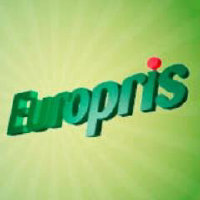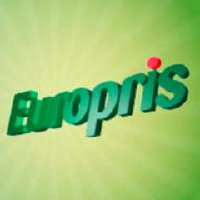
Europris ASA
OSE:EPR


| US |

|
Johnson & Johnson
NYSE:JNJ
|
Pharmaceuticals
|
| US |

|
Berkshire Hathaway Inc
NYSE:BRK.A
|
Financial Services
|
| US |

|
Bank of America Corp
NYSE:BAC
|
Banking
|
| US |

|
Mastercard Inc
NYSE:MA
|
Technology
|
| US |

|
UnitedHealth Group Inc
NYSE:UNH
|
Health Care
|
| US |

|
Exxon Mobil Corp
NYSE:XOM
|
Energy
|
| US |

|
Pfizer Inc
NYSE:PFE
|
Pharmaceuticals
|
| US |

|
Palantir Technologies Inc
NYSE:PLTR
|
Technology
|
| US |

|
Nike Inc
NYSE:NKE
|
Textiles, Apparel & Luxury Goods
|
| US |

|
Visa Inc
NYSE:V
|
Technology
|
| CN |

|
Alibaba Group Holding Ltd
NYSE:BABA
|
Retail
|
| US |

|
3M Co
NYSE:MMM
|
Industrial Conglomerates
|
| US |

|
JPMorgan Chase & Co
NYSE:JPM
|
Banking
|
| US |

|
Coca-Cola Co
NYSE:KO
|
Beverages
|
| US |

|
Walmart Inc
NYSE:WMT
|
Retail
|
| US |

|
Verizon Communications Inc
NYSE:VZ
|
Telecommunication
|
Utilize notes to systematically review your investment decisions. By reflecting on past outcomes, you can discern effective strategies and identify those that underperformed. This continuous feedback loop enables you to adapt and refine your approach, optimizing for future success.
Each note serves as a learning point, offering insights into your decision-making processes. Over time, you'll accumulate a personalized database of knowledge, enhancing your ability to make informed decisions quickly and effectively.
With a comprehensive record of your investment history at your fingertips, you can compare current opportunities against past experiences. This not only bolsters your confidence but also ensures that each decision is grounded in a well-documented rationale.
Do you really want to delete this note?
This action cannot be undone.

| 52 Week Range |
63.5
82.05
|
| Price Target |
|
We'll email you a reminder when the closing price reaches NOK.
Choose the stock you wish to monitor with a price alert.

|
Johnson & Johnson
NYSE:JNJ
|
US |

|
Berkshire Hathaway Inc
NYSE:BRK.A
|
US |

|
Bank of America Corp
NYSE:BAC
|
US |

|
Mastercard Inc
NYSE:MA
|
US |

|
UnitedHealth Group Inc
NYSE:UNH
|
US |

|
Exxon Mobil Corp
NYSE:XOM
|
US |

|
Pfizer Inc
NYSE:PFE
|
US |

|
Palantir Technologies Inc
NYSE:PLTR
|
US |

|
Nike Inc
NYSE:NKE
|
US |

|
Visa Inc
NYSE:V
|
US |

|
Alibaba Group Holding Ltd
NYSE:BABA
|
CN |

|
3M Co
NYSE:MMM
|
US |

|
JPMorgan Chase & Co
NYSE:JPM
|
US |

|
Coca-Cola Co
NYSE:KO
|
US |

|
Walmart Inc
NYSE:WMT
|
US |

|
Verizon Communications Inc
NYSE:VZ
|
US |
This alert will be permanently deleted.
 Europris ASA
Europris ASA
Europris ASA
Europris ASA, a Norwegian retail company, has established itself as a prominent player in the Nordic consumer market since its inception in 1992. With its headquarters nestled in Fredrikstad, Europris operates as a chain of discount stores spreading across Norway, making affordability its centerpiece. The company positions itself strategically with a concept focused on being a one-stop-shop for everyday essentials. By offering a diverse selection of products ranging from groceries to home and garden supplies, Europris caters to a wide spectrum of consumer needs. This breadth of product offerings, coupled with competitive pricing strategies, forms the backbone of Europris’s market appeal. Their approach is tailored to maximize efficiency and cost savings, which are critical in maintaining the low-price leadership that attracts their target clientele.
Europris makes money through a finely tuned retail operation that emphasizes volume sales and an efficient supply chain. Capitalizing on economies of scale, they negotiate favorable terms with suppliers, allowing them to keep prices low without sacrificing margins. The effectiveness of their logistics and distribution network also plays a vital role in sustaining inventory flow and minimizing overhead costs. A careful blend of localized marketing efforts and national advertising campaigns ensures that Europris remains visible and appealing to cost-conscious shoppers. Moreover, their expansion strategy which includes franchising, further secures their foothold in the retail sector, enabling steady revenue streams while broadening their market influence across Norway. In this way, the company has built a robust business model that hinges on delivering value through affordability and convenience.

Europris ASA, a Norwegian retail company, has established itself as a prominent player in the Nordic consumer market since its inception in 1992. With its headquarters nestled in Fredrikstad, Europris operates as a chain of discount stores spreading across Norway, making affordability its centerpiece. The company positions itself strategically with a concept focused on being a one-stop-shop for everyday essentials. By offering a diverse selection of products ranging from groceries to home and garden supplies, Europris caters to a wide spectrum of consumer needs. This breadth of product offerings, coupled with competitive pricing strategies, forms the backbone of Europris’s market appeal. Their approach is tailored to maximize efficiency and cost savings, which are critical in maintaining the low-price leadership that attracts their target clientele.
Europris makes money through a finely tuned retail operation that emphasizes volume sales and an efficient supply chain. Capitalizing on economies of scale, they negotiate favorable terms with suppliers, allowing them to keep prices low without sacrificing margins. The effectiveness of their logistics and distribution network also plays a vital role in sustaining inventory flow and minimizing overhead costs. A careful blend of localized marketing efforts and national advertising campaigns ensures that Europris remains visible and appealing to cost-conscious shoppers. Moreover, their expansion strategy which includes franchising, further secures their foothold in the retail sector, enabling steady revenue streams while broadening their market influence across Norway. In this way, the company has built a robust business model that hinges on delivering value through affordability and convenience.





























 You don't have any saved screeners yet
You don't have any saved screeners yet
